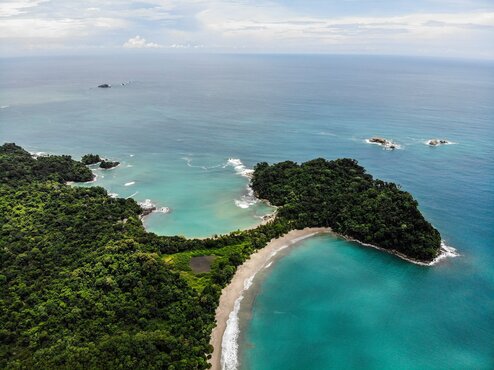
Best Conservation Volunteer Opportunities in Latin America
Whether you’re interested in working with animals or helping to restore tropical rainforests, Latin America is packed with conservation volunteer opportunities. Explore our guide to conservation volunteer opportunities in Latin America.
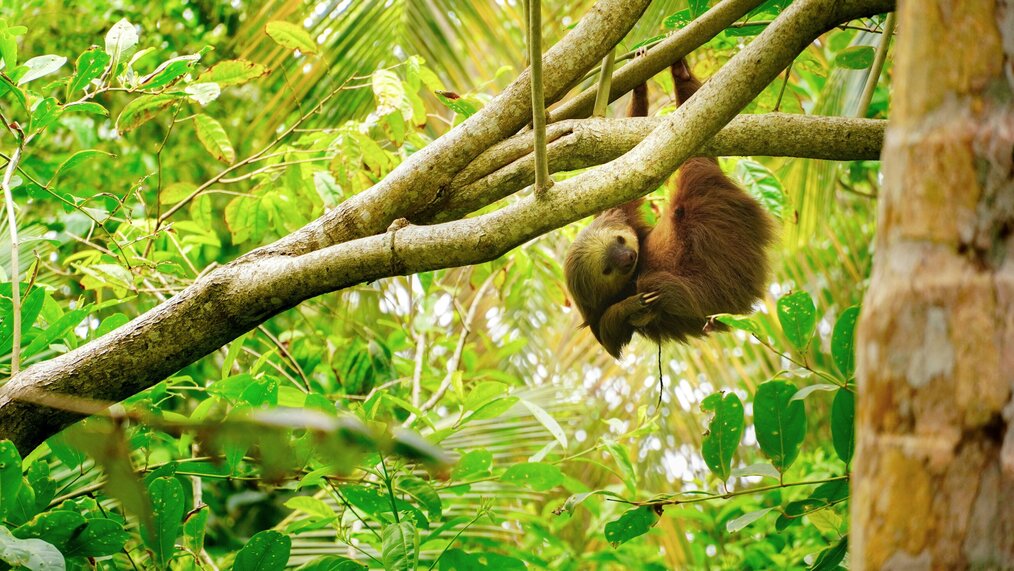
Latin America is rich in opportunities for conservation volunteering. With thriving biodiversity, a varied topography, and eco-conscious locals looking to preserve their natural environment, there are many conservation opportunities for volunteers in Latin America.
Whether you want to volunteer in the luscious rainforests of Brazil, assist marine conservation initiatives in Costa Rica, or support the welfare of turtles in Nicaragua, there is a program for every conservation niche!
Best countries for conservation opportunities in Latin America
With many countries offering conservation programs, you have a wealth of options to choose from! However, each country has unique characteristics, emphasizing different environmentally conscious initiatives and aspects of conservation. Selecting a focus and considering the working environment will help you choose the best destination for you to volunteer in.
Here are the best countries for conservation opportunities in Latin America:
- Costa Rica: Nestled between the Caribbean Sea and the Pacific Ocean, Costa Rica is a natural paradise. Rife with volcanoes, mountains, unscathed beaches, and luscious rainforests, Costa Rica’s biodiversity is thriving. Whether you want to help sloths and sea turtles or learn how locals facilitate their renowned commitment to sustainability, volunteers have plenty of conservation program options.
- Argentina: Home to deserts, mountains, thousands of miles of coastline, and even glaciers, Argentina’s varied topography offers volunteers a wide range of conservation opportunities.
- Ecuador: Although making up for only 1% of land on the continent, Ecuador still boasts of some of the best programs for volunteering in South America. The Galapagos Island is one of the world’s best for wildlife observation. Whether volunteers want to support rainforest conservation or work with projects in the “showcase of evolution” of Galapagos Island, there is no shortage of conservation opportunities in Ecuador.
- Brazil: With 60% of the Amazon rainforest, it’s no surprise that Brazil is a top volunteer in South America destination. Despite thriving biodiversity in its jungles, Brazil is also home to many endangered species that require volunteers to support.
- Guatemala: Home to volcanoes, rainforests, and ancient Mayan settlements, Guatemala is a haven for those who love natural sceneries. But political strife and disputes over land ranchers, palm oil companies, mining companies, and developers threaten conservation initiatives. There are various conservation projects in Guatemala dedicated to protecting sea turtles, wildlife rehabilitation, negating the effects of deforestation, and more.
- Peru: Also home to the Amazon, 60% of Peru is covered by the sprawling rainforest, but it faces deforestation issues. With the largest number of bird species in the world, volunteers are needed to preserve not only the Amazon Rainforest but also the vast number of species native to Peru.
GVI (Costa Rica)
Best for turtle conservation
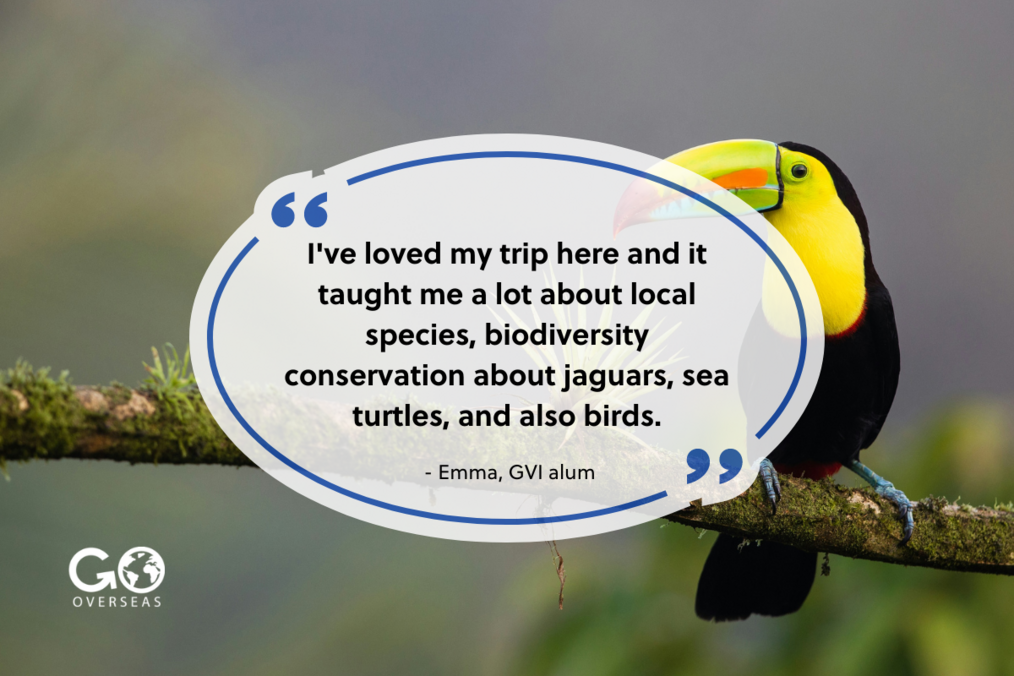
⏳Program length: 2 to 12 weeks
💲Starting price: $2000 USD
✅What's included: Accommodation, excursions, airport transfers, meals, in-country support
📍Locations: Limon, Costa Rica
Sea turtles aren’t just cute, they’re actually “keystone species” due to their role in maintaining the health of marine ecosystems! GVI’s Ethical Impact Program in Costa Rica collaborates with local organizations to increase community development and sustainability in the ocean.
With GVI, volunteers will work in the Limon province, accessible only to researchers and conservationists, granting volunteers an exclusive insight into Costa Rica’s marine ecosystem. Volunteers will support project goals by conducting night surveys, nest protection, beach patrols, and more. Outside of conservation work, volunteers can visit national parks, drink home-brewed Costa Rican coffee, do yoga, go hiking, and much more.
IVHQ (Peru)
Best for jungle conservation

⏳Program length: 2 to 24 weeks
💲Starting price: $820 USD
✅What's included: Accommodation, meals, airport pick up, orientation, and 24/7 in-country support
📍Locations: Cusco, Peru
With 60% covered in the Peruvian Amazonia, Peru offers plenty of opportunities when it comes to volunteering in South America. Voted the "Top Volunteer Abroad Provider” in the Go Overseas Community Choice Awards six years in a row, IVHQ offers a wide range of volunteer programs in Peru with 19 different project options available. From Amazon jungle conservation to animal care to even eco-agriculture conservation, you can customize their programs to fit your interests.
IVHQ’s jungle conservation program in Peru offers volunteers the chance to live in the heart of the jungle while contributing towards conservation initiatives such as facilitating reforestation, trail conservation, species monitoring, animal inventories, and much more. Volunteers can embrace Peru’s unrivaled natural awe while minimizing the effects of climate change, deforestation, and other human activity.
GVI (Mexico)
Best for marine conservation

⏳Program length: 2 - 12 weeks
💲Starting price: $3500 USD
✅What's included: Accommodation, meals, 24/7 in-country support, pre-departure training
📍Locations: Puerto Morelos, Mexico
GVI’s marine conservation expedition program in the tropics of the Mexican Caribbean allows volunteers to contribute to eco initiatives while gaining professionally regulated qualifications and practical skills.
Volunteers will put their efforts towards conserving the second-largest barrier reef system in the world by facilitating coral reef restoration, reducing pollution, running environmental awareness workshops, and more. In addition to their conservation volunteering, volunteers can also gain their Professional Association of Diving Instructors (PADI) certification. Not only is this a valuable skill, but it can open up even more opportunities for marine conservation volunteering globally.
IPBio (Brazil)
Best for scientific research

⏳Program length: 1 - 3 weeks
💲Starting price: $173 USD
✅What's included: Accommodation, activities, equipment
📍Locations: Iporanga, Brazil
The Biodiversity Research Institute program in Brazil offers opportunities for volunteers who want to engage in the scientific side of conservation. Volunteers can conduct scientific research on biodiversity, ecology, and animal behavioral patterns, in the Atlantic Forests of Brazil.
Volunteers will stay in a close-knit community called Iporanga in the Atlantic Rainforest where they wake up to the calls of monkeys, birds, and other native species. Day-to-day tasks vary from wildlife photography, producing content for conservation awareness, species monitoring, agricultural maintenance, and much more. Outside conservation responsibilities, volunteers can hike, visit waterfalls, learn the native language, or engage in community activities with locals.
Amigos de las Americas (Costa Rica)
Best for sustainability education
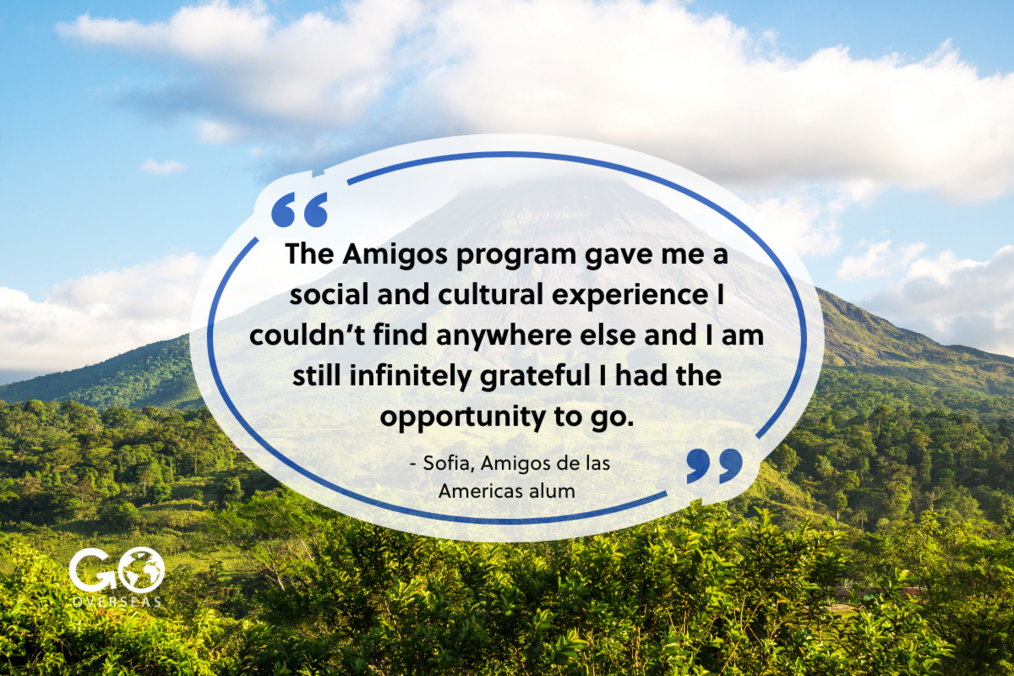
⏳Program length: 2 to 6 weeks
💲Starting price: $4375 USD
✅What's included: : Accommodation, activities, transportation, meals, 24/7 in-country support
📍Locations: Los Santos, Cartago, La Brunca, Parismina, Costa Rica
The Authentic Service and Immersion program offers a unique opportunity for young volunteers (aged 15 to 19) to learn and fully immerse themselves in sustainability initiatives in Costa Rica. With over three decades working in Costa Rica, Amigos is renowned for supporting local initiatives and providing volunteers with a fantastic social and cultural experience.
Throughout the program, volunteers can meet and engage with local activists, facilitate sustainability goals, and learn Spanish. Sustainability education includes projects related to beach clean-ups, turtle nests, and hatching monitoring, eco-agriculture, and more. In addition to driving environmental initiatives, volunteers can benefit from Spanish language lessons, enhancing community involvement and language immersion.
Maximo Nivel (Costa Rica)
Best for beach conservation
⏳Program length: minimum 1 week
💲Starting price: $785 USD
✅What's included: Accommodation, meals, volunteer certification, 24/7 in-country support
📍Locations: Nicoya Peninsula, Costa Rica
Maximo Nivel’s beach conservation program takes place on Costa Rica’s Nicoya peninsula, home to nature reserves and wildlife refuges protected natural reserve dedicated to sustainability management and research. The Cabo Blanco nature reserve is the oldest protected area of Costa Rica, spanning from luscious tropical forests to tranquil beaches.
As a beach conservation volunteer, your responsibilities may include trail maintenance, light construction work, beach patrols, and cleanup, and research to preserve the environment of beaches on Costa Rica’s Pacific coast. Outside of conservation, volunteers can integrate themselves within the local community or socialize with other volunteers while navigating Costa Rica’s natural wonders.
GIVE Volunteers (Nicaragua)
Best for agroforestry and environmental conservation
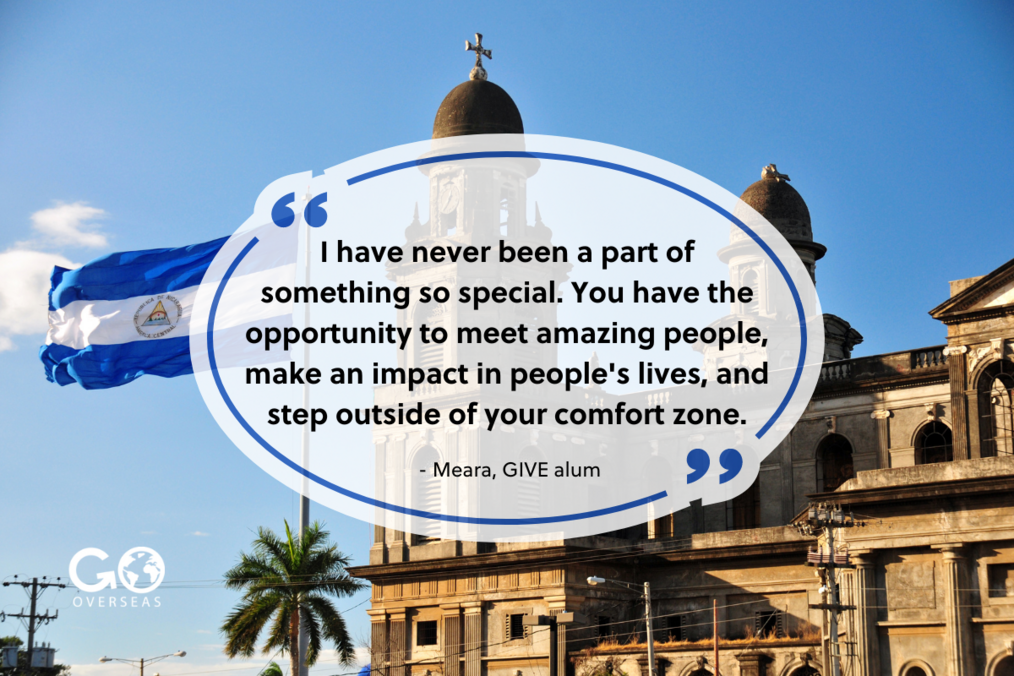
⏳Program length: 11 days
💲Starting price: $2595 USD
✅What's included: Accommodation, transportation, meals, activities
📍Locations: Jiquilillo, Nicaragua
GIVE Volunteers’ conservation program in Nicaragua provides local communities with much-needed support in the age of climate anxiety and rising sea levels. Displaced families who have lost homes due to floods will benefit from new homes while volunteers will benefit from cultural immersion by working with local community members.
In addition to building homes, other volunteer projects include mangrove restoration which provides vital protection for homes and crops by forming a natural barrier from flooding. Rising sea levels affect the structural integrity of homes and displace families, but salt waters ruin crops, creating further economic and food insecurity for community members.
Free time allows volunteers to surf, paddle-board, learn Spanish, and immerse in Nicaraguan culture. This trip will take you from the black sands of Pacific Coast beaches to the glowing craters of Pacific Rim volcanoes. Cap off your adventure by sandboarding down an active volcano, kayaking in a crater lake, and seeing a glowing molten lava lake at night!
Why do conservation volunteering abroad
Whether you’re seeking personal benefits or want to make a difference in the world, there are many reasons to volunteer abroad.
Firstly, you’re not only applying your skills in an area that requires it, but you’ll also be developing and enhancing your skills and knowledge in particular areas. Many biomes, animals, and communities require your help to improve the quality of the environment.
When it comes to you, you’ll meet many like-minded and eco-conscious travelers. You’ll see the world sustainably as an active participant, rather than hopping from one place to the next.
Can I volunteer in Latin America for free?
There are ways to volunteer abroad for free. Some programs do not require a fee, only your presence and contribution!
However, many conservation volunteering programs require a fee to sustain the charity or project. Without volunteer fees, they may cease to exist, and the animals, community members, or environment will lack adequate support. Many of these programs use these fees to optimize the quality of the experience by investing in better facilities and resources while providing accommodation to its volunteers.
Read more: Most Affordable Gap Year Programs in 2024
Things to consider before doing conservation volunteering in Latin America
It’s important to consider several factors before you start your volunteer abroad adventures.
- Your goals: What are you hoping to get out of the program? Are you looking to make a difference, or develop your social skills and cultural awareness? Some programs may offer personal benefits whereas others will help you develop specific practical skills.
- Ethics: If you’re wondering what makes a project ethical, consider how it benefits species, the environment, and members of the local community.
- Affordability: You should budget accordingly to comfortably afford the program fee, airfare, and costs related to extra activities.
- Location: Consider what sort of location, landscape, and climate you’ll work best in.
- Responsibilities: While some prefer to work in a hands-on capacity, others may thrive working behind the scenes. Ensure that you’re happy with the responsibilities required throughout the conservation program.
- Physical commitment: Many conservation programs require general fitness and good health to fulfill these responsibilities. Whether your project requires light gardening or hiking in the oppressive heat or rain, ensure your health is in good condition to commit to the program.
- Living standards: Volunteer accommodation is typically rustic and modest. While they may be lower standards than what you’re used to at home, they provide safety and comfort, they are a reflection of the local population’s living standards which provides greater cultural insight.
Start your Latin American conservation experience today!
Volunteering in Latin America can offer volunteers a different perspective on how we can contribute towards environmentally driven goals. In addition to applying your skills, knowledge, and work ethic to give back to the community, you’ll travel the world sustainably, meet new people, and widen your perspective by volunteering abroad. Whether on a farm, tranquil beach, or in the flourishing Amazon rainforest, you’ll have the experience of a lifetime volunteering in Latin America.
Read more about conservation volunteering abroad:






